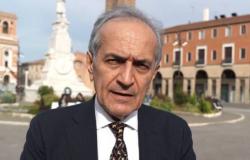“The “No to the Variation of the SS 16 Rimini Let’s Protect our Territory” Committee of Rimini – it is written in a note – expresses strong opposition to the construction of the variant to the SS16, expected to be promoted again by the administration, as the only possible cure for mobility in the Rimini area. After an in-depth analysis of the PTAV plan, numerous criticisms and concerns have been highlighted regarding the environmental, economic and social impact of the proposed and promoted mobility concept.
In particular, it is highlighted that the strategic choices linked to the topic of mobility are not entirely aligned with the meta-objectives and trajectories defined by the Plan and promoted in the media, which intend to address and tend to resolve important challenges such as decarbonisation, the reduction of consumption of the soil, the increase in biodiversity, urban and territorial resilience, as well as their cohesion.
Basically – continues the Committee “No to the Variation of the SS 16 – it is believed that the strategic lines on mobility require further elaboration, with the inclusion of more incisive actions in the medium term (in terms of reduction of vehicles in circulation, improvement of air quality and reduction of travel times), which do not rely on the construction of large, unnecessary infrastructure works, the mitigation of which will never be completed, such as the variant to the SS16 planned for the major section coplanar with the A14.
Below are the main criticisms:
Environmental and Atmospheric Pollution: The implementation of the variant to the SS16 will lead to a significant increase in air and noise pollution, exposing citizens to air quality levels that do not comply with the permitted standards. This will have serious consequences on public health and the environment.
Analyzing the cards – continues the note – it is clear that the entire route of the variant is foreseen in the context of geomorphological, hydraulic and hydrogeological danger in which transformation interventions must be limited in areas with high risk susceptibility
The construction of such an imposing work also exposes the territory to risks with respect to the healthiness of the aquifers above which the work will be built, which will produce its negative climate-altering effects not only once completed, but also during the long period of the works .
Concretion and Land Consumption: The construction of the variant will involve the concreting of 28 km in length and 35 meters in width, resulting in a total width of 50 meters and a total of 14 lanes. This project – continues the “NO to the Variation” Committee – will lead to the closure of several companies, please note that 500 hectares of valuable agricultural land will be cemented, only in the Rimini Nord area and surrounding areas. Causing the waterproofing of an important portion of territory, with a total of 1.2 million m2 of asphalt and 140,000 m2 of construction sites.
Ineffectiveness in resolving traffic-related problems: Creating a supply of roads means encouraging the use of the car. The variant will not solve congestion problems of traffic, since the same studies conducted by ANAS highlight that the variant will divert approximately 12,000 vehicles per day from the A14, while those who will not travel on the current SS16 will be approximately 5,000, with an increasing balance in daily traffic of +7,000.
High costs and economic unsustainability: The construction of the variant to the SS16 will cost around 600 million euros, which will probably increase further during construction.
Lack of a truly sustainable and modern alternative: The project does not take into account more sustainable alternatives, such as investment in Local Public Transport (LPT) and micromobility, which could significantly reduce car use and the related environmental impacts.
Investing in LPT and light mobility infrastructure has a significantly lower cost in economic terms than building the variant, the costs of which will also be heavy in environmental and health terms as mentioned several times. The work once created will remain forever, it is not reversible. It is a different thing to invest in TPL and sharing mobility, whose evolutions also thanks to new digital technologies allow for high adaptability to local dynamics, creating a substantial difference between a reversible choice VS an irreversible choice.
Although the previous PTCP (Provincial Territorial Coordination Plans) already hoped for a decrease in land consumption, the result – writes the “No to the Variation of the SS 16” Committee – it was exactly the opposite, with a constant increase in urbanization works, even those of very high impact, concentrated downstream from the state road or along it, traffic inevitably continues to be generated where the spaces no longer allow it, and no longer even allow the introduction of greenery that allows the city’s temperatures to be lowered, rather than capturing CO2 etc. Therefore, a further and healthy innovation would be to think first of a road system served by LPT (local public transport) or routes for micromobility and then of subdivisions/urbanisations, otherwise the mobility problem will not reach
We would also like to highlight that:
● the administration, in several sessions, has admitted that the Variation has an extremely impactful impact, declaring that it is actively engaging in an attempt to make changes aimed at reducing the damage. For now, only minor changes have been presented, mainly concerning junctions and underpasses, leaving the general route and therefore the hypothetical damage substantially unchanged;
● the Deputy Minister for Infrastructure Bignami explicitly declared to the press that the VIA is as old as the project and that in the meantime the territory has changed, therefore it is no longer current, inviting the administrations to proceed with the modification/update of the project;
● all the environmentalist associations in the area are declaredly and strongly against the realization of the project and have proposed, on several occasions, various modifications/alternatives;
- studies and research at a global level say in no uncertain terms that the construction of new roads encourages the use of private cars, continuing a vicious circle that is no longer sustainable or is sustainable until even the last plot is consumed of land left;
- the Municipality promotes the Green Plan (postponed for several years) and supports the PTAV, which uses environmental, urban regeneration and sustainable development themes as the cover of the project, as well as essential and constituent elements of the strategic plan. Expressly recognizing the immediate need and urgency of a substantial change in the way we design the city;
● Public institutes such as ISPRA continually raise alarms on the risks deriving from land consumption. Even if in reality, the news is enough to understand its seriousness.
We continue to believe, despite all this, that if the 500 million (and the rest) needed to build the project magically arrived tomorrow, this would be done instantly, forgetting in the blink of an eye what was said and analyzed above.
Perhaps there is something not working properly in translating what is declared and advertised into concrete actions”.
Info:
https://www.novariantess16rimini.it/
Press




